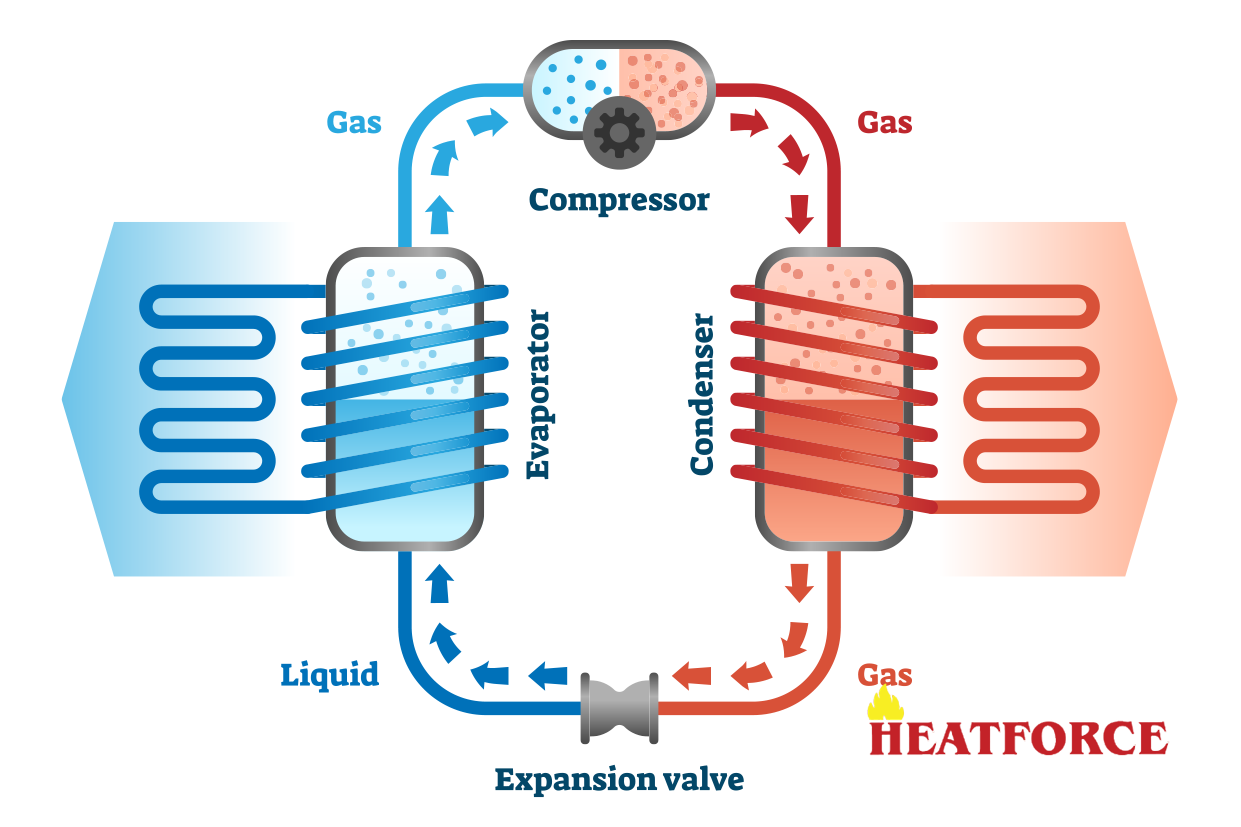
If you’ve been exploring eco-friendly heating options for your home or office, you’ve likely come across Air Source Heat Pumps (ASHP), and one of the first questions we’re regularly asked when surveying a property for an ASHP is “How does an Air Source Heat Pump work?”.
In this blog, we’ll demystify Air Source Heat Pumps, unveiling their operational intricacies and their impressive benefits.
An air source heat pump is a cutting-edge piece of technology designed to efficiently heat your space.
It comprises three primary components:
- A compressor
- An evaporator
- A condenser
These components harmoniously interact with a refrigerant, a fluid that plays a vital role in the heat transfer process.
The operation of an ASHP begins at the evaporator, which extracts heat from the surrounding outdoor air. This process causes the refrigerant within the evaporator to evaporate and morph into a gas.
Despite the exterior temperature, the evaporator can absorb heat effectively – a testament to the pump’s superior technology.
Next, the refrigerant gas is funnelled into the compressor.
As the compressor pressurises the gas, the gas’s temperature rises even more. This high-temperature gas then flows into the condenser.
The condenser is where the magic truly happens!
The pressurised gas releases its heat to a secondary fluid, often water. This heat transfer process causes the gas to condense back into a liquid, ready to be cycled back to the evaporator for another heat absorption process.
The now-heated secondary fluid is then transported around your building through a system of radiators or underfloor heating pipes. This efficient distribution warms the building from the inside out, providing you with a comfortable, cosy atmosphere.
Notably, ASHPs stand out from other heating systems due to their extraordinary energy efficiency.
Rather than generating heat from scratch, these pumps merely relocate heat, thereby reducing electricity consumption and slashing your bills.
Moreover, ASHP offers considerable environmental advantages.
Their operation results in significantly lower carbon dioxide emissions and other greenhouse gases compared to conventional fossil fuel-based heating systems.
By choosing an ASHP, you’re not just warming your space – you’re also playing your part in combating climate change.
Finally, the question you’re eagerly anticipating – how can you benefit from this advanced, eco-friendly technology?
For more information and to see if you are eligible for any grants towards the cost of the installation, arrange a survey by contacting:
▷ 0292 076 3622
▷ renewables@heatforce.co.uk


